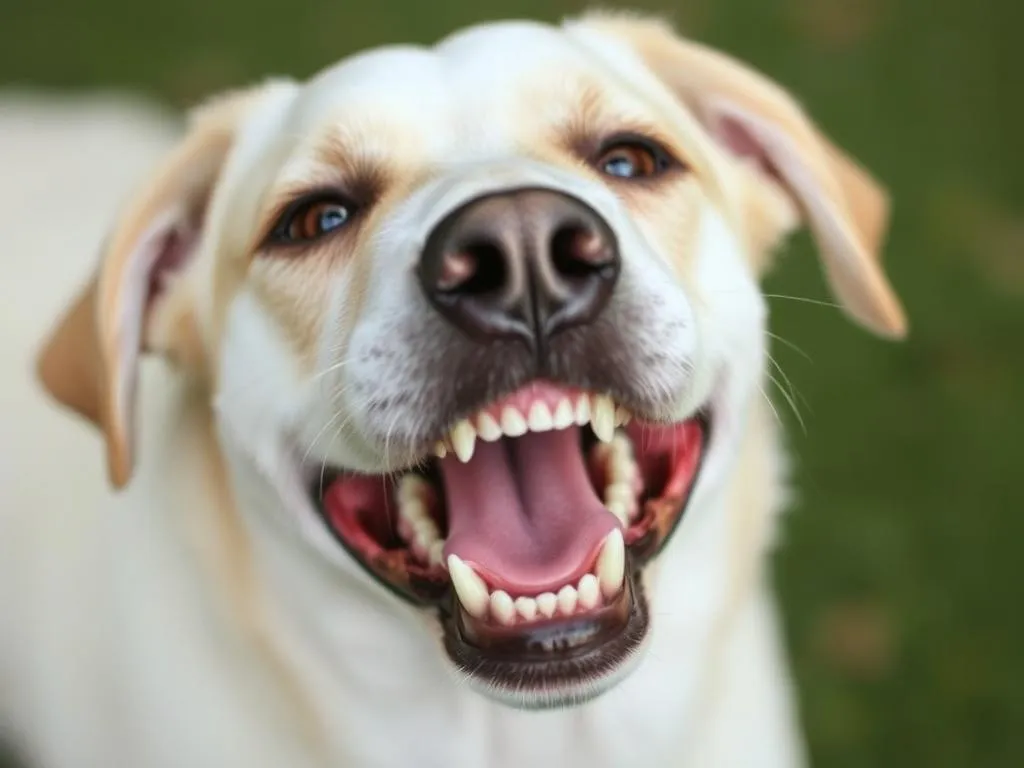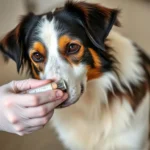
Introduction
Dental health is paramount to a dog’s overall well-being, yet many pet owners often overlook it. Dogs losing teeth can be a common occurrence, but understanding the underlying causes and recognizing the signs is crucial for maintaining your furry friend’s health. In this article, we will delve into canine dental anatomy, explore the various reasons behind tooth loss, and discuss how to identify and manage dental issues effectively. By the end of this post, you’ll be equipped with valuable knowledge to ensure your dog’s dental health is prioritized.
Understanding Canine Dental Anatomy
Overview of Dog Teeth
Dogs possess a unique set of teeth that play distinct roles in their diet and health. Understanding these types is essential for recognizing potential issues.
- Incisors: These small teeth at the front are used for nibbling and grooming.
- Canines: The sharp, pointed teeth next to the incisors are crucial for tearing meat.
- Premolars: Located behind the canines, these teeth help in grinding food.
- Molars: These larger teeth at the back further assist in breaking down food into digestible pieces.
Each type of tooth is vital to a dog’s ability to eat, groom themselves, and maintain overall health.
Normal Tooth Development in Dogs
Understanding the timeline of a dog’s tooth development is key to anticipating changes in their dental health.
- Puppy Teeth: Puppies typically begin teething around three weeks of age when their baby teeth start to emerge.
- Adult Teeth: By six months, most puppies will have lost their baby teeth and have a full set of adult teeth.
- Teething Process: During this transition, puppies may experience discomfort and may chew on objects to alleviate the soreness.
Recognizing this normal tooth development can help pet owners discern between typical teething and potential dental issues.
Causes of Dogs Losing Teeth
Natural Causes
While some tooth loss is natural, particularly during the teething phase in puppies, other factors can contribute to tooth loss in adult dogs.
- Teething in Puppies: As puppies grow, their baby teeth will fall out to make way for adult teeth, typically occurring between 4 to 6 months of age.
- Aging in Adult Dogs: As dogs age, their teeth may become worn down due to regular use, leading to potential tooth loss.
Dental Diseases
Dental diseases are one of the most significant contributors to dogs losing teeth.
- Periodontal Disease: This common condition starts with plaque buildup, leading to inflammation of the gums and, ultimately, tooth loss if untreated.
- Other Conditions: Gingivitis (gum inflammation) and tooth decay can also lead to serious dental issues, including tooth loss.
Trauma and Injury
Dental trauma can occur for various reasons, leading to unexpected tooth loss.
- Accidents: Dogs may lose teeth due to accidents such as falls or collisions.
- Fights: Engaging in fights with other dogs can result in broken or lost teeth.
- Hard Chewing: Chewing on hard objects like bones or rocks can lead to fractures and subsequent tooth loss.
Identifying signs of dental injury early can prevent further complications.
Nutritional Deficiencies
A balanced diet is crucial for maintaining dental health.
- Importance of Nutrition: Dogs require specific vitamins and minerals to support their dental health.
- Key Nutrients: Calcium, phosphorus, and vitamin D are essential for strong teeth. A lack of these nutrients can lead to weakened teeth and increased risk of tooth loss.
Signs Your Dog Might Be Losing Teeth
Physical Signs
Recognizing the physical signs of dental issues can help in addressing problems early.
- Loose Teeth: Check for any loose teeth or noticeable gaps in the gum line.
- Swollen or Bleeding Gums: These are clear indicators of dental disease and should not be ignored.
Behavioral Changes
Changes in your dog’s behavior can signal dental discomfort.
- Eating Habits: If your dog shows reluctance to chew or prefers softer foods, it may indicate a dental problem.
- Irritability: Increased irritability or signs of discomfort can also suggest oral pain.
Bad Breath and Oral Discomfort
Persistent bad breath often correlates with dental issues.
- Connection with Dental Health: Bad breath (halitosis) is frequently a symptom of periodontal disease or other dental problems.
- Indicators of Pain: Look for signs of pain, such as pawing at the mouth or whining, which can indicate discomfort from dental issues.
Diagnosing Dental Issues in Dogs
Veterinary Examination
Regular veterinary check-ups are essential for maintaining your dog’s dental health.
- Importance of Check-ups: Veterinarians can detect dental issues that may not be visible to pet owners, enabling early intervention.
- What to Expect: During a dental exam, the vet will check for signs of dental disease, loose teeth, and overall oral health.
Diagnostic Tools
Veterinarians use various diagnostic tools to assess your dog’s dental health.
- X-Rays: These can reveal underlying issues, such as root problems or bone loss that are not visible during a physical exam.
- Dental Probes: These tools help assess the health of the gums and measure the depth of periodontal pockets.
Understanding these tools can help pet owners appreciate the thoroughness of veterinary examinations.
Treatment Options for Dogs Losing Teeth
Preventive Care
Preventive care is the best approach to avoid the issue of dogs losing teeth.
- Regular Cleanings: Schedule routine dental cleanings with your veterinarian to prevent plaque buildup.
- Dental Care Products: Invest in dog-specific toothpaste, dental chews, and toys designed to promote oral health.
Treatment for Dental Diseases
If dental diseases are diagnosed, various treatments may be necessary.
- Periodontal Disease Treatment: This may include professional cleaning, scaling, and possibly surgery for severe cases.
- Surgical Options: In extreme cases, extraction of damaged teeth may be required to preserve the health of the remaining teeth.
Home Care Strategies
At-home care plays a vital role in maintaining your dog’s dental health.
- Maintaining Dental Health: Regular brushing with dog-friendly toothpaste can reduce plaque buildup.
- Dental-Friendly Diet: Consider incorporating dental-friendly foods that promote chewing and cleaning of teeth.
Preventing Tooth Loss in Dogs
Regular Dental Check-ups
Routine veterinary visits are crucial for proactive dental care.
- Importance of Routine Visits: Regular check-ups allow for early detection and treatment of dental issues.
- Recommended Frequency: Depending on your dog’s dental health, they should see the vet at least once a year for a dental exam.
Proper Nutrition
A well-balanced diet is foundational for dental health.
- Dietary Tips: Include high-quality dog food that supports oral health and avoid sugary treats that can lead to tooth decay.
- Foods to Avoid: Steer clear of bones that may splinter and hard objects that can fracture teeth.
Dental Hygiene Practices
Implementing effective dental hygiene practices at home can significantly impact your dog’s oral health.
- At-Home Care: Regular brushing, along with the use of dental treats and toys, can help keep teeth clean and gums healthy.
- Chewing and Cleaning: Encourage chewing on appropriate toys designed to promote dental health.
When to See a Veterinarian
Warning Signs
Certain symptoms warrant immediate veterinary attention.
- Specific Symptoms: If your dog exhibits loose teeth, severe gum swelling, or persistent bad breath, consult a veterinarian promptly.
- Timely Intervention: Early intervention can prevent further complications and tooth loss.
Long-term Management
Discussing ongoing care with your veterinarian is vital to maintaining your dog’s dental health.
- Ongoing Care: Regular follow-ups may be necessary to monitor dental health, especially if your dog has a history of dental issues.
- Monitoring for Recurrence: Keep an eye out for signs of recurring dental problems, and don’t hesitate to seek advice from your veterinarian.
Conclusion
In summary, understanding the factors leading to dogs losing teeth is crucial for every pet owner. From recognizing the signs to knowing when to seek professional help, being proactive about your dog’s dental health can significantly enhance their quality of life. Remember, a healthy mouth contributes to a happy and long life for your furry friend. Taking these steps will ensure that your dog maintains a healthy smile for years to come.









